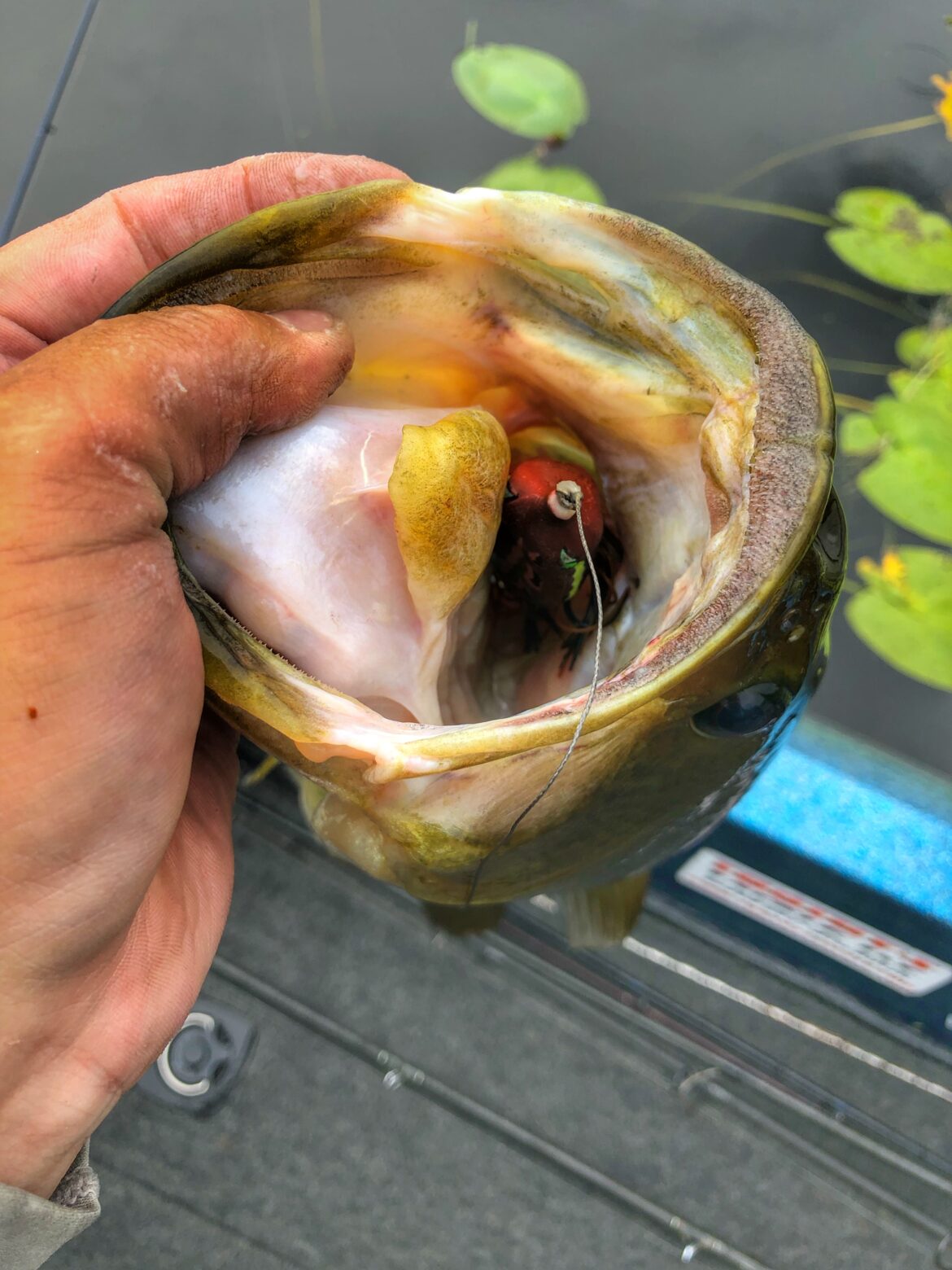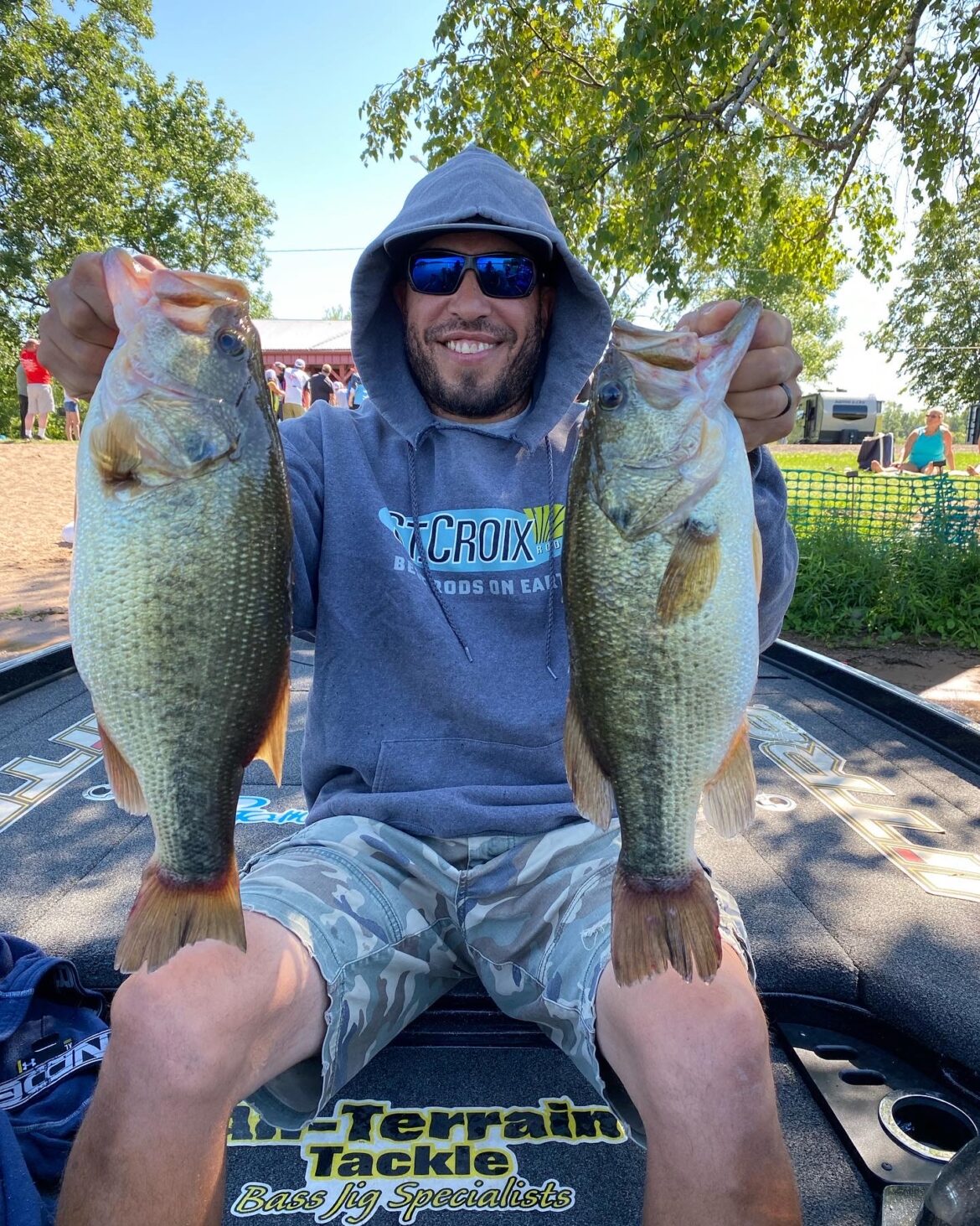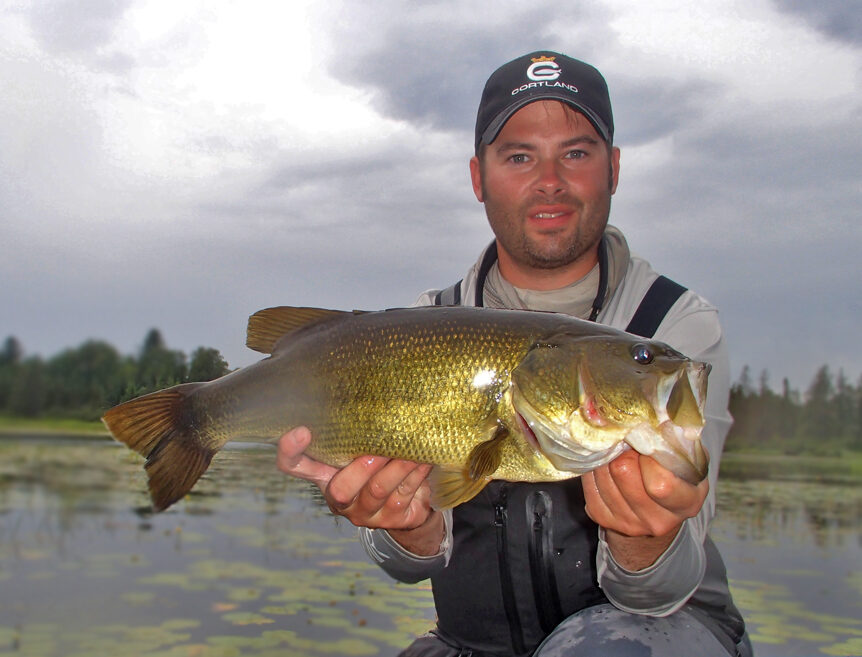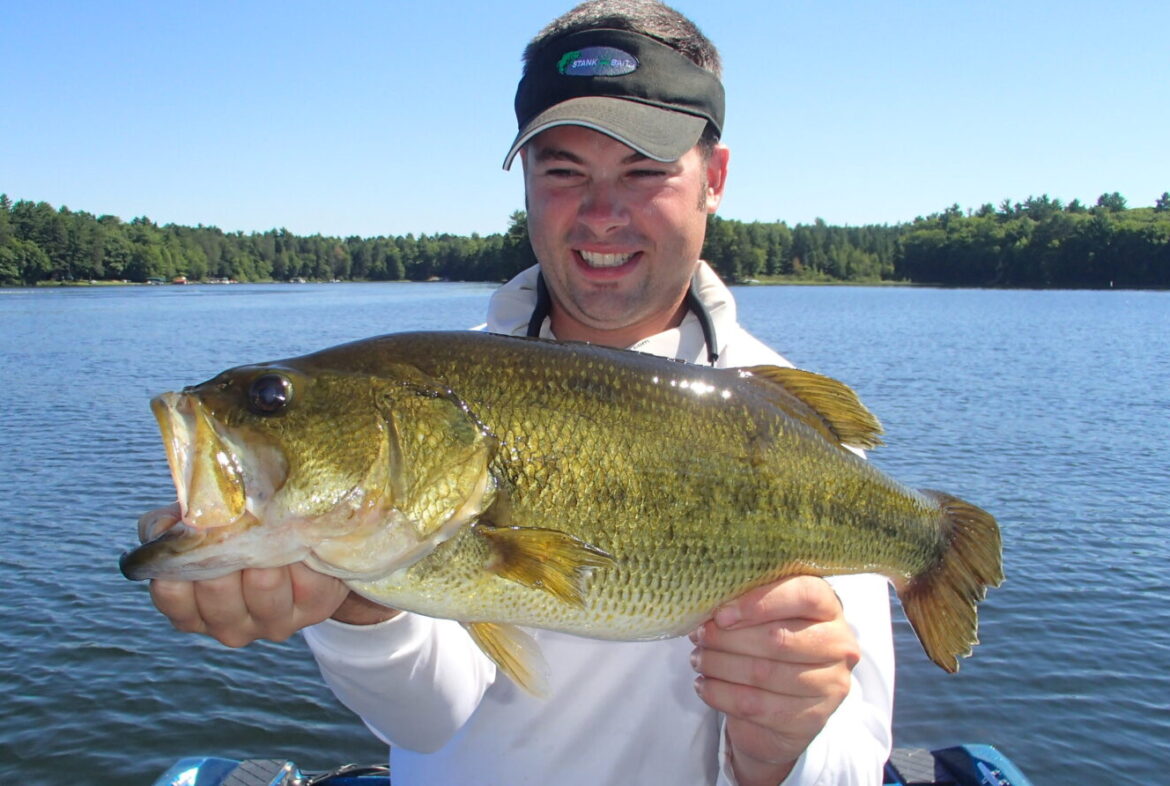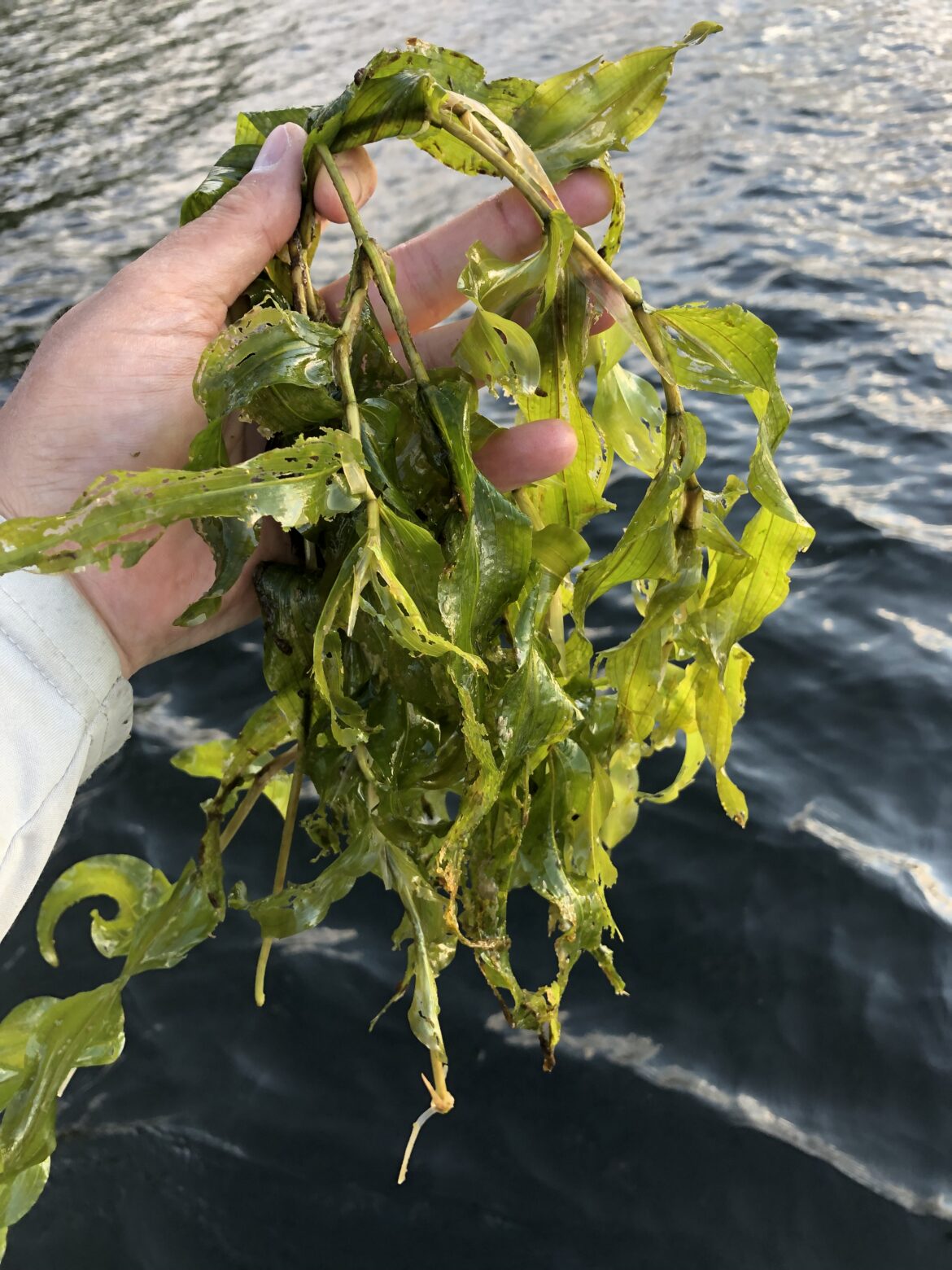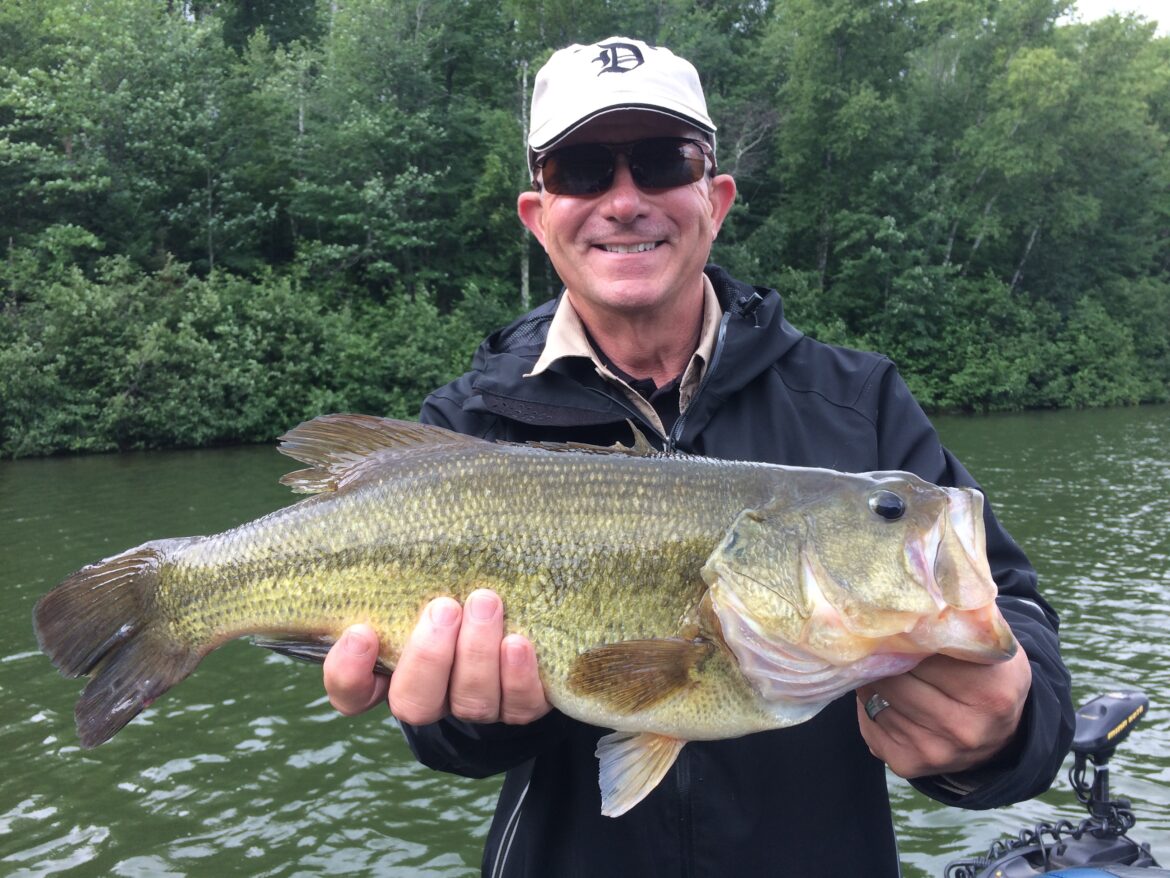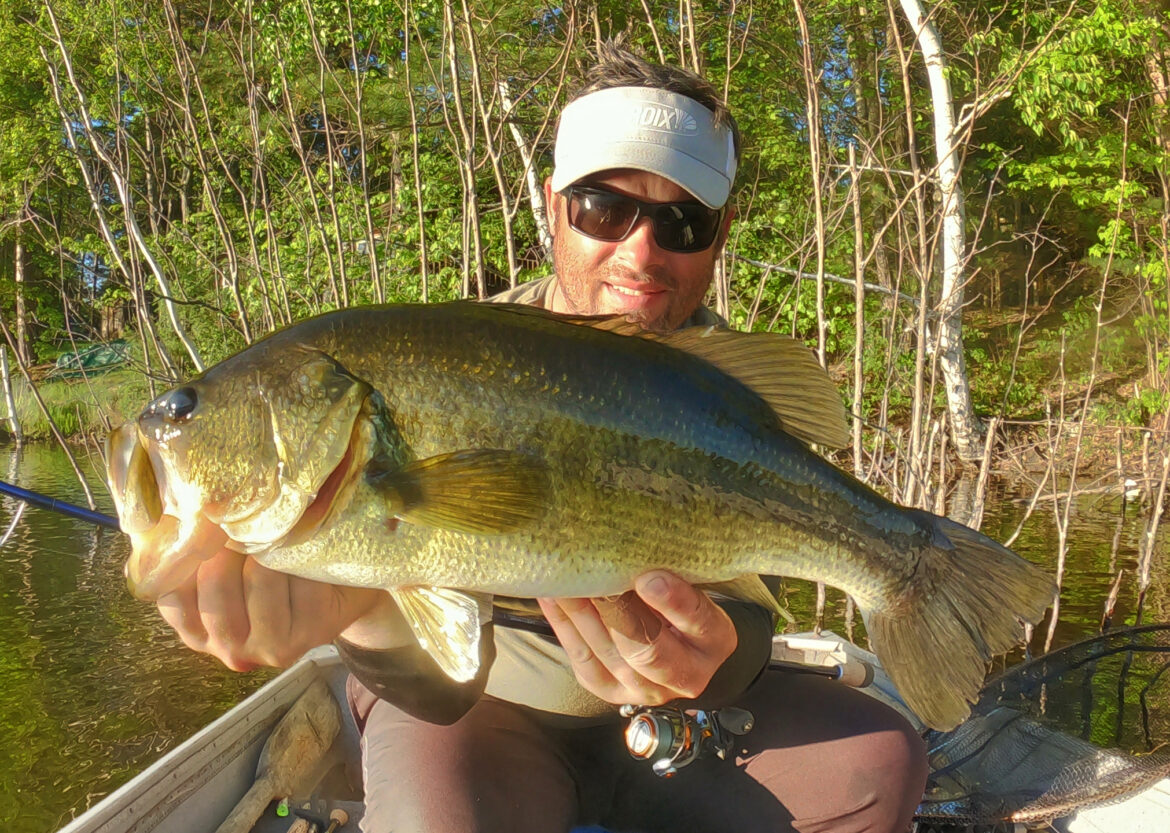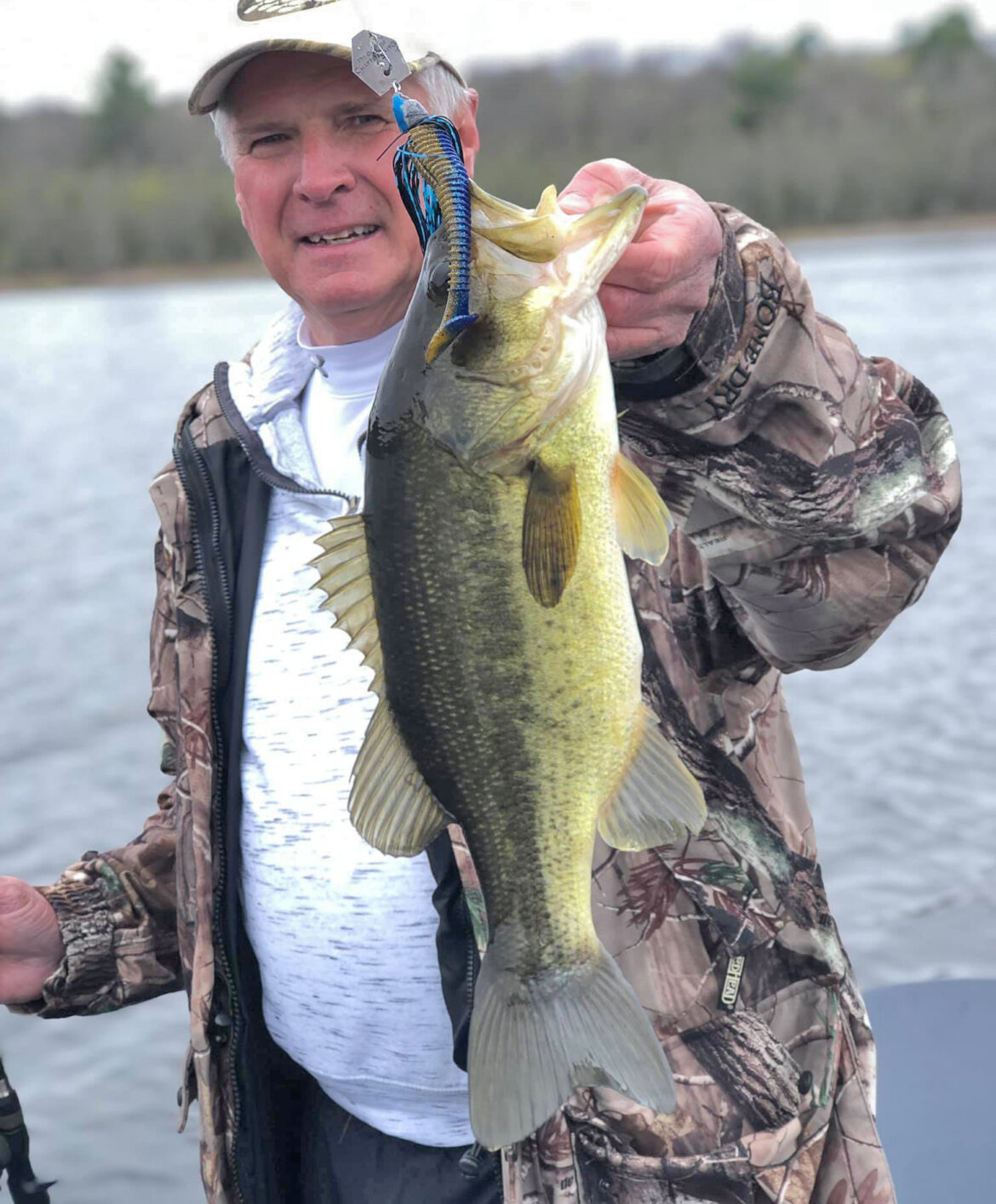Frogs are fantastic baits in heavy vegetation. Utilizing a surface-running soft plastic frog around lily pads and atop mats of slop is exhilarating as bass come out of the water to engulf the lure. The distinctive feature of frogs is that their hooks and riggings are weedless and there are no protrusions or sharp
Opportunistic predators with voracious appetites, largemouth bass will eat whatever living creatures swim and slither atop matted weeds or across the lake’s surface. With our lakes gaining in weed cover and plant life, this spells success for anglers pursuing largemouths with reptile and amphibian baits.
Slop. Junkweed. Floating weed mats. Pad fields. Several northern largemouth waters contain these plant life overgrowths. As the summer months proceed on, plant species sprout and flourish, fed by daily sunshine and nutrients seeping into the system. Through photosynthesis, they continue to grow as summer progresses.
It’s no secret that backwaters attract and concentrate big bass on a seasonal basis. Their habitats can be thick and rich with diverse emergent and submergent plant species. Another characteristic of them can be the abundance of timber and wood cover, and the element of protection from fishing pressure and the rest of the


